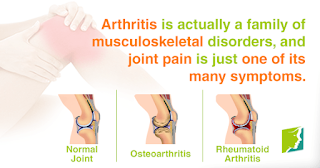Miric BioTech herbal products
Miric After Shaving Gel Cream
It is a gel to be used by men after they have finished
shaving. It contains an antiseptic agent such as denatured alcohol, stearate
citrate and witch hazel to prevent infection of cuts, as well as to act as an
astringent to reduce skin irritation. Menthol has been used to numb damaged
skin. Aftershave with alcohol usually causes an immediate burning sensation in
men who apply it post-shave, with effects sometimes lasting several minutes.
For this reason, Miric After Shaving Gel Cream is Non-Alcoholic. It
removes dirt and pollutants.
How to Use ?
- Soak the Shaving Brush:- When preparing for a shave, your shaving brush should be soaking in warm water in your sink to get the bristles nice and soft. Alternatively, you could also hold the brush under hot running water for some time.
- Wet The Bristle Hair:- The next step requires that you get your beard (or moustache) ready for shaving. Have your facial hair saturated with warm water to make them soft and ready.
- Apply Shaving Cream onto Brush:- Depending on the thickness of your hair, apply the appropriate quantity of shaving cream onto the brush. Around three-quarters of an inch of cream does the trick in most cases.
- Lather:- Begin whipping your brush into the shaving mug in order to get the shaving cream into a rich lather. How much you need to whip will depend on the type of shaving cream you use, but you should be able to tell when the lather is ready.
- Apply to Face:- Once you have a rich lather, use the brush to apply it to your face evenly. The whole purpose of applying the cream (now lather) is to help in getting a smooth shave, so make sure you apply it thoroughly.
Miric Termi Pain
It is an effective pain reliever Ointment. Miric TermiPain with unique herbs ensure a fast remedy for headaches, pains and mild
sprains. The unique aroma of the product plays a vital role in relieving the
pain.
Pain is a distressing feeling
often caused by intense or damaging stimuli, such as stubbing a toe, burning a
finger, putting alcohol on a cut, and bumping the "funny bone"[
Because it is a complex, subjective phenomenon, defining pain has been a
challenge. "Pain is an unpleasant sensory and emotional experience
associated with actual or potential tissue damage, or described in terms of
such damage. In medical diagnosis, pain is a symptom.
Pain motivates the individual to
withdraw from damaging situations, to protect a damaged body part while it
heals, and to avoid similar experiences in the future. Most pain resolves
once the noxious stimulus is removed and the body has healed, but it may
persist despite removal of the stimulus and apparent healing of the body.
Sometimes pain arises in the absence of any detectable stimulus, damage or
disease.
Classification.
Pain is classified according to
specific characteristics:
(1) region of the body involved,
(2) system whose dysfunction may be
causing the pain,
(3) duration and pattern of
occurrence,
(4) intensity and time since onset,
and
(5) etiologye to the
nervous system or by its abnormal function.
Type
Nociceptive.
Nociceptive pain is caused by
stimulation of peripheral nerve fibers that respond to stimuli
approaching or exceeding harmful intensity and may be classified according to
the mode of noxious stimulation. The most common categories are "thermal,
"mechanical" and "chemical".
Neuropathic
Neuropathic pain is caused by damage
or disease affecting any part of the nervous system involved in
bodily feelings. Peripheral neuropathic pain is often
described as "burning", "tingling", "electrical",
"stabbing", or "pins and needles".
Phantom.
Phantom pain is pain felt in a
part of the body that has been lost or from which the brain no longer receives
signals. It is a type of neuropathic pain.
Psychogenic
Psychogenic pain, also called psychalgia or somatoform
pain, is a pain caused, increased, or prolonged by mental, emotional, or
behavioral factors. Headache, back pain, and stomach pain are sometimes diagnosed
as psychogenic.
Breakthrough pain
Breakthrough pain is transitory
acute pain that comes on suddenly and is not alleviated by the patient's normal
pain management
Incident pain
Incident pain is a pain that arises
as a result of activity, such as movement of an arthritic joint,
stretching a wound, etc.
Effect on functioning.
Experimental subjects challenged by
acute pain and patients in chronic pain experienced impairments in attention
control, working memory, mental flexibility, problem solving, and
information processing speed. Acute and chronic pain are also associated
with increased depression, anxiety, fear, and anger.





Comments
Post a Comment